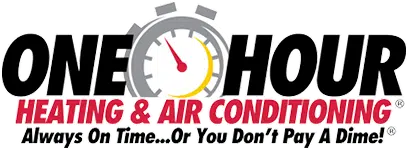Heat pumps are a reliable way to stay warm during the cold winters in Lansdale, PA. However, freezing temperatures in February can cause issues, including frost buildup and system inefficiencies. A frozen heat pump can lead to reduced performance, higher energy bills, and potential system damage. Understanding why this happens and how to prevent it will keep your home comfortable throughout the season.
Why Do Heat Pumps Freeze in Cold Weather?
Heat pumps can freeze in Lansdale, PA, due to restricted airflow, defrost cycle malfunctions, low refrigerant levels, or poor drainage. When snow, ice, or debris blocks the outdoor coils, airflow decreases, making it harder for the heat pump to absorb heat efficiently. A clogged air filter can also reduce circulation, increasing the risk of freezing.
A faulty defrost cycle is another common issue. Heat pumps rely on this automatic process to remove frost buildup, but sensor failures or control board malfunctions can prevent proper operation. If the defrost cycle does not activate, ice will continue to accumulate, reducing efficiency.
Low refrigerant levels can also contribute to freezing. When refrigerant levels drop due to leaks or improper charge, the system struggles to transfer heat, causing the coils to freeze. Additionally, poor drainage can lead to standing water around the unit, which may refreeze and worsen ice buildup.
Preventing heat pump freezing requires regular maintenance, proper airflow, and timely inspections. By addressing these issues early, homeowners can ensure their systems operate efficiently throughout Lansdale’s cold February weather.

Signs Your Heat Pump Might Be Freezing Up
A heat pump freezing up during Lansdale’s harsh February weather can lead to inefficiency, higher energy bills, and potential system failure. Recognizing the warning signs early can help prevent costly repairs and keep your home comfortable.
Weak or Inconsistent Heating
- If your home feels colder despite the heat pump running, ice buildup may be restricting airflow and reducing efficiency.
- The system may struggle to extract heat properly, causing it to run longer without effectively warming your space.
Ice or Frost on the Outdoor Unit
- A light frost is normal, but thick ice covering the coils suggests a malfunctioning defrost cycle or poor drainage.
- Excessive ice can block airflow, making the system overwork and increasing wear on critical components.
Unusual Noises or Vibrations
- Grinding, buzzing, or clicking sounds may indicate frozen parts straining to function properly.
- Ice buildup can throw fan blades off balance, leading to noticeable vibrations and potential mechanical failure.
Frequent Use of Auxiliary or Emergency Heat
- When your system constantly switches to backup heat, it may be struggling due to excessive ice accumulation.
- Relying on auxiliary heat increases energy consumption and can lead to higher utility costs.
What to Do Next
If you notice these signs, do not ignore them. Schedule professional maintenance, clear debris from around the unit, and ensure proper airflow to keep your heat pump running efficiently.
The Role of the Defrost Cycle in Preventing Freezing
Preventing freezing is crucial to keeping your heat pump running efficiently during Lansdale’s cold February temperatures. Ice buildup on the outdoor unit can block airflow, reduce efficiency, and strain the system. The defrost cycle helps by automatically melting ice before it causes long-term damage or performance issues.
How the Defrost Cycle Works
- Sensors detect ice forming on the outdoor coils and trigger the defrost cycle to prevent excessive buildup.
- The heat pump temporarily reverses operation, sending warm refrigerant to the outdoor unit to melt accumulated ice.
- Once the ice clears, the system returns to heating mode, restoring normal function and maintaining indoor comfort.
Warning Signs of a Defrost Cycle Malfunction
- Thick ice remains on the outdoor unit for extended periods, reducing the system’s efficiency.
- The heat pump runs continuously but struggles to maintain the desired indoor temperature.
- Auxiliary heat activates more frequently, increasing energy consumption and utility bills.
Preventing Defrost Cycle Issues
- Keep the outdoor unit clear of snow, ice, and debris to allow proper airflow.
- Schedule regular maintenance to inspect sensors, refrigerant levels, and heating components.
- If persistent ice buildup occurs, a technician can diagnose and repair defrost system malfunctions.
A reliable defrost cycle prevents freezing, allowing your heat pump to operate efficiently and provide consistent warmth throughout the winter.
Keeping Airflow Unobstructed for Optimal Performance
Ensuring proper airflow is essential for preventing freezing and maintaining your heat pump’s efficiency during Lansdale’s cold February weather. When airflow is blocked, ice can accumulate, reducing performance and increasing energy consumption. Keeping the system clear helps prevent strain and ensures reliable operation.
-
Clear Snow and Debris Around the Unit
After a snowfall, removing snow and ice from around the heat pump should be a priority. Using a soft brush or broom prevents damage to the unit’s delicate fins while ensuring unobstructed airflow. Avoid sharp tools that could dent or puncture the coils. Maintaining at least two feet of clearance around the unit helps air circulate properly, reducing the risk of ice buildup.
-
Replace Air Filters Regularly
A clogged filter restricts circulation, making the heat pump work harder and increasing the chances of freezing. Dirty filters also reduce efficiency, leading to higher energy costs. Replacing filters every one to three months improves airflow and keeps the system operating at peak performance.
-
Keep Indoor Vents Unobstructed
Indoor airflow is just as important as outdoor clearance. Furniture, curtains, or rugs blocking vents can disrupt circulation, making it harder for the heat pump to regulate temperature. Keeping vents open allows warm air to flow freely, preventing unnecessary strain on the system.
Proper airflow management reduces the risk of freezing, helping your heat pump perform efficiently and maintain consistent warmth throughout the winter.
Checking and Maintaining Refrigerant Levels
Preventing freezing starts with maintaining proper refrigerant levels, which help your heat pump operate efficiently during Lansdale’s cold February weather. When refrigerant is too low, the system cannot absorb heat properly, causing coils to become too cold and ice to form. Addressing refrigerant issues early prevents performance decline and costly repairs.
-
Recognizing Signs of Low Refrigerant
A heat pump with insufficient refrigerant may run longer than usual, struggle to heat your home, or fail to maintain stable indoor temperatures. Weak airflow and uneven heating often signal a problem. If you hear hissing or bubbling near the unit, a refrigerant leak could be the cause, requiring immediate professional attention.
-
Understanding the Consequences of Leaks
Refrigerant leaks significantly impact system efficiency and can lead to severe damage. When levels drop too low, the heat pump must work harder, increasing energy usage and wearing down components faster. If your energy bills spike unexpectedly, a refrigerant issue may be to blame. Ignoring leaks can result in frozen coils and costly system failures.
-
Scheduling Routine Maintenance
Annual professional maintenance ensures your heat pump has the correct refrigerant charge for optimal performance. An HVAC technician can inspect for leaks, check refrigerant levels, and perform necessary repairs to prevent freezing issues. Regular servicing extends system lifespan and improves overall efficiency.
Keeping refrigerant levels balanced prevents ice buildup, helping your heat pump provide reliable warmth throughout winter while avoiding unnecessary breakdowns.
Proper Drainage Prevents Ice Buildup
Water buildup around your heat pump can lead to serious ice formation during Lansdale’s cold February weather. When moisture cannot drain properly, it refreezes around the unit, restricting airflow and forcing the system to work harder. Over time, this extra strain can reduce efficiency, increase energy costs, and cause mechanical damage. Preventing ice accumulation starts with ensuring proper drainage.
-
Recognizing Drainage Issues
Pooling water near your heat pump is a warning sign of poor drainage. Clogged drain lines, compacted snow, or uneven ground can cause water to collect around the unit. When temperatures drop, this moisture turns into ice, reducing system performance and making it harder for the heat pump to generate heat efficiently.
-
Preventing Ice Formation
Keeping the area around your heat pump free of snow, leaves, and debris ensures water can drain properly. Regularly inspecting and clearing drain lines prevents blockages that cause water to back up. If the unit sits too low, slightly elevating it allows water to flow away instead of pooling and freezing at the base.
-
Professional Drainage Solutions
If ice buildup continues despite proper maintenance, an HVAC professional can assess the situation and recommend solutions. Options like regrading the area, installing a drain pan, or improving water runoff can help prevent freezing issues.
By maintaining proper drainage, your heat pump stays ice-free, providing reliable heating and ensuring energy efficiency throughout the winter months.
Avoiding Frequent Thermostat Adjustments
Constantly changing the thermostat setting can negatively impact your heat pump’s efficiency, making it more vulnerable to freezing during Lansdale’s cold February weather. Frequent adjustments force the system to work harder, leading to unnecessary wear and potential performance issues. Maintaining a steady temperature helps reduce strain on the unit and ensures reliable heating.
How Frequent Changes Affect Performance
Each time the thermostat is adjusted, the heat pump must quickly adapt to meet the new temperature demand. This causes the system to cycle more frequently, increasing energy consumption and putting extra stress on key components. Over time, this strain can lead to ice accumulation on the outdoor unit, restricting airflow and reducing efficiency.
Benefits of a Steady Temperature
Keeping a consistent temperature allows the heat pump to run more efficiently, preventing sudden workload increases. Many modern thermostats offer programmable settings, allowing homeowners to schedule temperature adjustments in advance. This reduces the need for manual changes while keeping indoor temperatures comfortable and stable.
Troubleshooting Temperature Fluctuations
If your heat pump struggles to maintain the desired temperature, underlying issues such as refrigerant leaks, airflow restrictions, or ice buildup may be to blame. A professional inspection can identify and resolve these problems, ensuring optimal system performance throughout the winter.
Avoiding unnecessary thermostat adjustments helps your heat pump run efficiently, reduces energy costs, and minimizes the risk of freezing, allowing it to keep your home warm and comfortable all season long.

Insulating and Protecting Outdoor Components
Protecting your heat pump from freezing temperatures is crucial for maintaining efficiency and preventing ice buildup during Lansdale’s cold February weather. Proper insulation reduces heat loss and shields outdoor components from harsh conditions, helping the system operate more reliably. When combined with routine maintenance, insulation can extend the unit’s lifespan and improve overall performance.
-
Insulating Pipes and Refrigerant Lines
Exposed pipes and refrigerant lines are vulnerable to freezing, which can restrict heat transfer and impact efficiency. Installing foam insulation or weatherproof pipe covers helps maintain proper temperature levels, preventing ice from forming. Without insulation, frozen pipes can reduce the heat pump’s ability to extract and distribute heat effectively.
-
Blocking Harsh Winds Without Restricting Airflow
Cold winds can accelerate ice accumulation on the heat pump by rapidly lowering temperatures around the unit. Installing a wind barrier, such as a fence or strategically placed shrubs, helps protect outdoor components from direct exposure. However, it’s important to ensure these barriers are positioned a few feet away to allow proper airflow, preventing overheating or restricted ventilation.
-
Combining Insulation with Preventative Maintenance
While insulation helps prevent freezing, it should be used alongside other maintenance practices. Clearing snow and ice from around the heat pump, checking refrigerant levels, and ensuring proper drainage all contribute to efficient system performance.
By insulating and protecting outdoor components, your heat pump can function more effectively, reducing the risk of freezing and ensuring reliable heating throughout the winter months.
When to Call an HVAC Professional
A heat pump should operate efficiently in cold weather, but persistent freezing or performance issues often require professional expertise. While routine maintenance helps prevent common problems, some malfunctions—such as a failing defrost cycle, refrigerant leaks, or continuous ice buildup—demand specialized attention. Contacting an HVAC technician at the right time can prevent system failures and expensive repairs.
Ongoing Freezing Despite Preventative Measures
Excessive ice buildup that doesn’t clear even after maintaining airflow, checking drainage, and removing snow suggests an internal issue. A faulty defrost system, restricted airflow, or low refrigerant levels can prevent the heat pump from functioning properly. Delaying repairs can lead to decreased efficiency, higher energy costs, and long-term damage.
Unusual Noises and Performance Declines
Grinding, buzzing, or clicking sounds often indicate mechanical problems that require professional diagnosis. A heat pump struggling to maintain consistent indoor temperatures or frequently switching to auxiliary heat may be experiencing component failure. Addressing these warning signs early ensures the system continues running efficiently.
The Importance of Preventative HVAC Maintenance
Professional inspections help catch minor issues before they become major repairs. Technicians check refrigerant levels, test defrost cycles, and ensure all components function correctly. Routine servicing extends the system’s lifespan, reducing the likelihood of unexpected breakdowns during Lansdale’s freezing February weather.
Scheduling professional service at the first sign of trouble keeps your heat pump in peak condition, ensuring reliable heating and energy efficiency throughout winter.
Conclusion
Keeping your heat pump in top condition is essential for maintaining a warm and energy-efficient home in Lansdale, PA. Preventing ice buildup starts with ensuring proper airflow, maintaining refrigerant levels, improving drainage, and setting a consistent thermostat. These proactive steps reduce strain on the system and improve overall performance.
Routine maintenance and timely inspections help prevent costly repairs and unexpected breakdowns. Ignoring early signs of freezing can lead to reduced efficiency, higher energy bills, and long-term damage. Addressing issues early ensures your heat pump operates smoothly throughout the winter months.
For reliable service, trust One Hour Heating & Air Conditioning of Lancaster, PA to keep your system running efficiently. Our expert technicians provide professional maintenance and repair solutions tailored to your needs.
Contact us today to schedule an inspection and ensure your heat pump stays ice-free and efficient all season long!
FAQS
-
Why does my heat pump freeze up during winter?
A heat pump can freeze due to restricted airflow, low refrigerant levels, drainage issues, or a malfunctioning defrost cycle. When outdoor temperatures drop, moisture around the unit can turn to ice, reducing efficiency. Ensuring proper airflow, maintaining refrigerant levels, and scheduling routine maintenance help prevent freezing.
-
What steps can I take to keep my heat pump from freezing?
Preventative measures include keeping the area around your heat pump free of snow, leaves, and debris. Replacing air filters regularly ensures proper airflow, while checking refrigerant levels helps the system operate efficiently. Ensuring proper drainage prevents water from pooling and refreezing around the unit.
-
How do I safely remove ice from my heat pump?
If light frost appears, allow the defrost cycle to run. However, if thick ice covers the outdoor unit, turn off the system and contact an HVAC professional. Manually chipping away ice can damage components, so a trained technician should inspect the system for underlying issues.
-
Can thermostat adjustments contribute to heat pump freezing?
Frequent thermostat changes force the heat pump to work harder, increasing wear and tear. This strain can lead to ice buildup in extreme temperatures. Keeping a steady indoor temperature allows the system to operate efficiently without overexertion.
-
When should I call an HVAC professional for heat pump freezing issues?
If your heat pump frequently freezes despite preventive measures, it may have a refrigerant leak, sensor malfunction, or airflow restriction. An HVAC technician can diagnose and resolve these issues, ensuring efficient operation throughout the winter in Lansdale, PA.
Maintaining your heat pump prevents freezing and ensures reliable heating throughout winter. Regular inspections, proper airflow, and timely repairs keep your system running efficiently.
One Hour Heating & Air Conditioning of Lancaster, PA offers expert service to protect your unit.
Contact us today to schedule maintenance and avoid winter breakdowns!





















